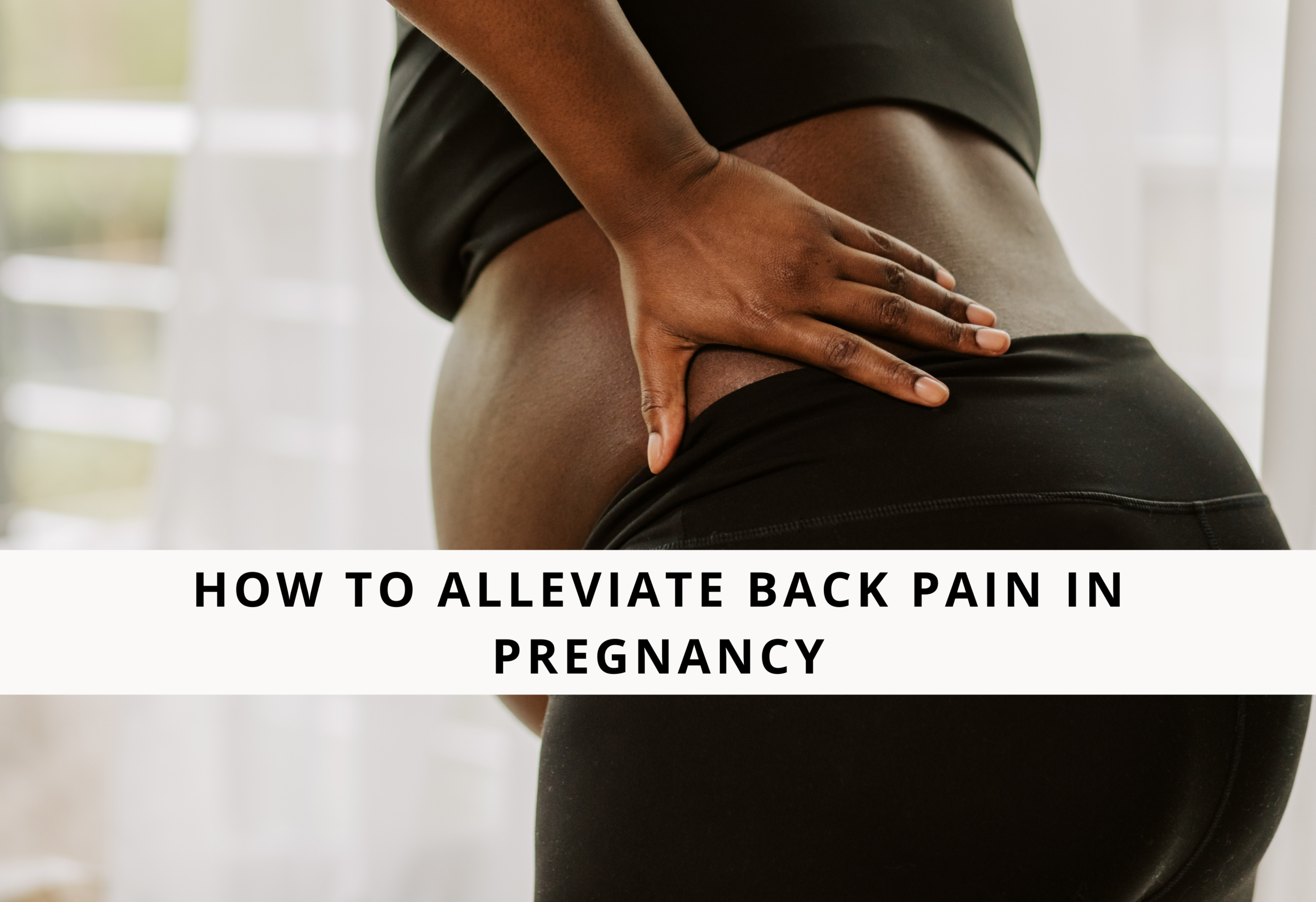Table of Contents
Back Pain in Pregnancy
Back pain is a common pregnancy discomfort, largely due to changes in the body caused by hormonal shifts, notably progesterone and relaxin. These hormones soften the connective tissues, including ligaments and joints. As pregnancy progresses, the body’s center of gravity shifts, leading to adjustments in posture that can increase the likelihood of experiencing back pain.
Research shows that a significant number of pregnant individuals, around 40% in the first trimester and up to 70% in the third trimester, report experiencing back pain. Lower back pain is often a result of the increased curvature of the spine needed to support the growing uterus, while upper back pain may be caused by factors such as the added weight of the breasts, changes in posture, and prolonged periods of sitting, especially in jobs that involve sitting for long periods.
Certain factors can increase the risk of experiencing back pain during pregnancy, including being older, having had multiple pregnancies before, and engaging in jobs that require heavy lifting or prolonged standing. Additionally, individuals who have experienced back pain in previous pregnancies are more likely to experience it again in subsequent pregnancies.
As pregnancy progresses, back pain can worsen, making it difficult to perform everyday activities like carrying objects, doing household chores, sitting, and walking. Some pregnant individuals may also experience pain in their pelvic area, which can include sensations like shooting or burning pain. This type of pain can be exacerbated by movement, particularly walking or bearing weight on one leg. It may also cause changes in walking patterns, such as a waddling gait with shorter strides, to reduce discomfort.
Another type of pelvic pain, known as sacroiliac joint pain, may accompany or occur separately from lower back pain. While it can sometimes be mistaken for sciatica, true sciatica is relatively rare among pregnant individuals (Richens et al., 2010). Pelvic girdle pain, which shares similar causes with lower back pain, presents with symptoms such as pain across the hip joints and thighs, or near the sacroiliac joints extending to the buttocks. This pain can be described as shooting, pulsating, or burning and may worsen with movement, especially walking or bearing weight on one leg. Some individuals may also experience clicking, snapping, or grinding sensations in the pelvis.
As the body prepares for childbirth, hormonal changes can lead to widening of the symphysis pubis, potentially resulting in symphysis pubis diastasis. While more commonly observed after childbirth, cases of symphysis pubis diastasis can occur during pregnancy, causing significant pain that can limit activities such as sitting, standing, and walking. in
Key Recommendations For Self Care For Pregnancy Back Pain and pelvic pain
For back and pelvic pain during pregnancy
- Pelvic Floor and Pelvic Tilt Exercises: These exercises help strengthen core body muscles and improve trunk stability, which can reduce back pain. They involve the muscles that stabilize the core and trunk. The ‘Cat – Cow’ yoga pose is an excellent example.
- Swimming or Aquatic Therapy: This can relieve joint and muscle pressure by providing a weightless environment. It has been effective in reducing pregnancy-related back and pelvic girdle pain.
- Chiropractic Manipulation: Some pregnant individuals report relief of low back pain from chiropractic manipulation.
- Prenatal Yoga: Practicing yoga for at least 1 hour per week may improve pelvic girdle and lower back pain.
- Physical Therapy: Working with a physical therapist prenatally is a fantastic way to support your growing body during pregnancy. A PT can give you specific exercises that are safe for pregnancy to alleviate pregnancy back pain. These exercises can provide relief from back and pelvic girdle pain.
- Acupuncture: Acupuncture is useful for reducing low back pain and improving function during pregnancy.
For pelvic girdle pain relief, consider the following measures.
- Maintain Good Posture: Stand straight with hips pulled forward. Avoid standing for long periods, and if necessary, place one foot on a low stool.
- Lift Properly: Use proper body mechanics when lifting objects.
- Sleep Position: Sleep on a supportive mattress and on your side with pillows propped under the uterus and between the knees.
- Footwear: Wear low-heeled shoes to avoid straining lower back muscles.
- Pelvic Tilt Exercises: These exercises help stretch back muscles.
- Supportive Gear: Use supportive maternity belts, binders, or support garments.
- Massage and Warm Packs: These can provide relief to the affected area.
- Sacroiliac Belt: A belt around the hips reduces symphysis pubis movement.
- Acetaminophen: Short-term use of acetaminophen can be considered for pain relief, following recommended doses (325–650 mg every 4–6 hours, up to 3000 mg/day). Although some studies show that using acetaminophen may be controversial in pregnancy.
Following these self-care recommendations can help manage pregnancy back pain and pelvic pain during pregnancy and improve overall comfort. It’s always a good idea to consult with healthcare professionals before starting any new exercise or treatment regimen during pregnancy.
When should you Contact your midwife about back pain in pregnancy?
It’s important to reach out to your midwife if you experience back pain during pregnancy that is severe, persistent, or accompanied by other concerning symptoms. Here are some situations where you should consider calling your midwife:
Severe Pain: If the back pain is intense and not relieved by rest or changes in position.
Persistent Pain: If the pain persists for an extended period of time, despite trying self-care measures.
New Symptoms: If you experience new symptoms along with back pain, such as vaginal bleeding, fever, numbness or weakness in the legs, or loss of bladder or bowel control.
Difficulty Performing Daily Activities: If the back pain interferes with your ability to perform daily activities, such as walking, standing, or sleeping.
Concerns about Labor: If you’re nearing your due date and experience back pain that you suspect could be related to labor, especially if it’s accompanied by regular contractions or other signs of labor.
History of Pregnancy Complications: If you have a history of pregnancy complications or medical conditions that could increase the risk of back pain complications.
Worsening Symptoms: If the back pain in pregnancy worsens over time or if you notice any changes in the pattern or intensity of the pain.
Your midwife is there to support you throughout your pregnancy journey and can provide guidance, reassurance, and appropriate medical care if needed. Don’t hesitate to reach out to them if you continue to have back pain in pregnancy or have any concerns or questions about your pain or any other aspect of your pregnancy.
Resources For Pregnancy Back Pain
Johns Hopkins Medicine. (2024). Back Pain in Pregnancy.
National Health Service. (2024). Back pain in pregnancy.
Read more about How to Alleviate Common Pregnancy Discomforts.





